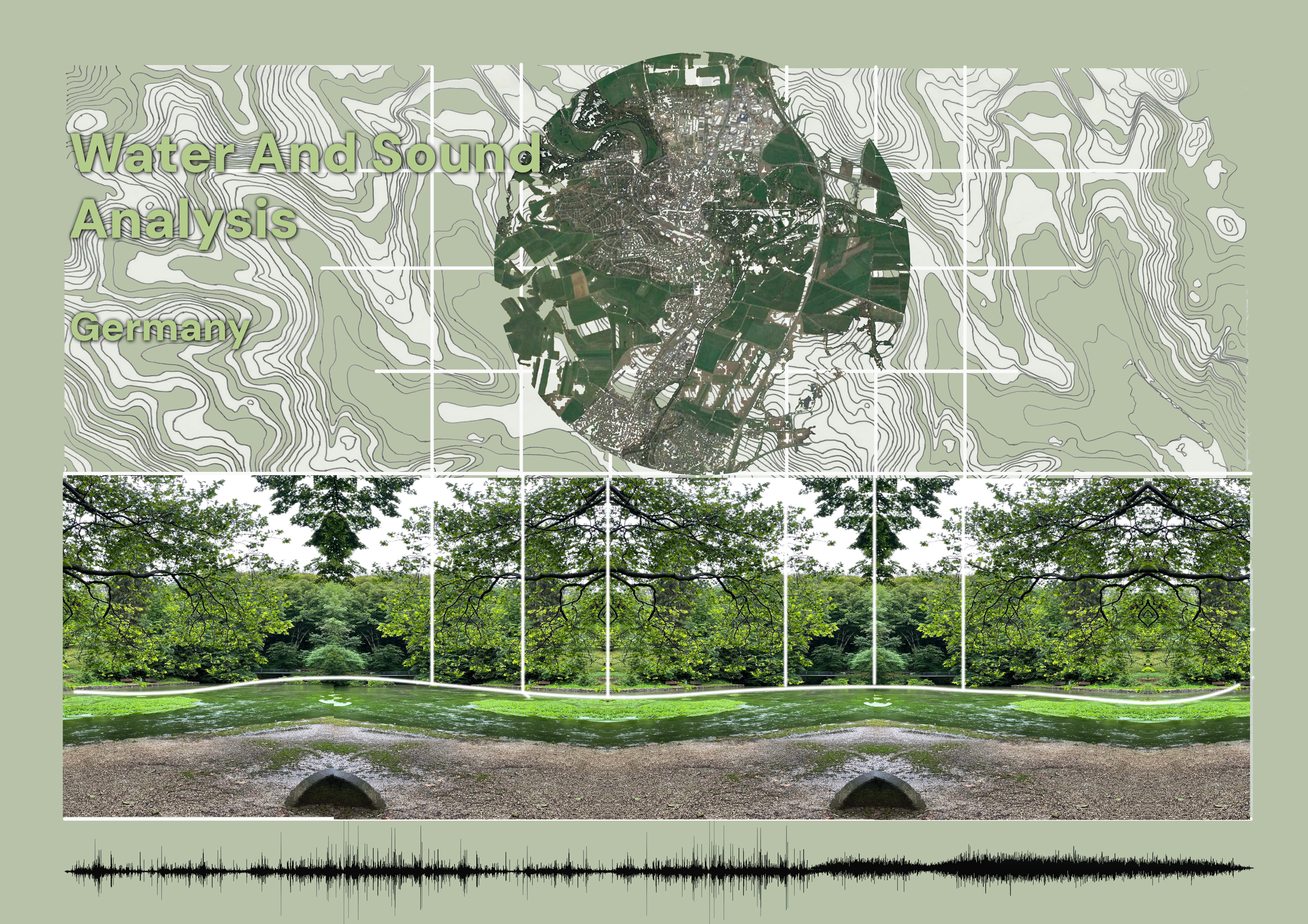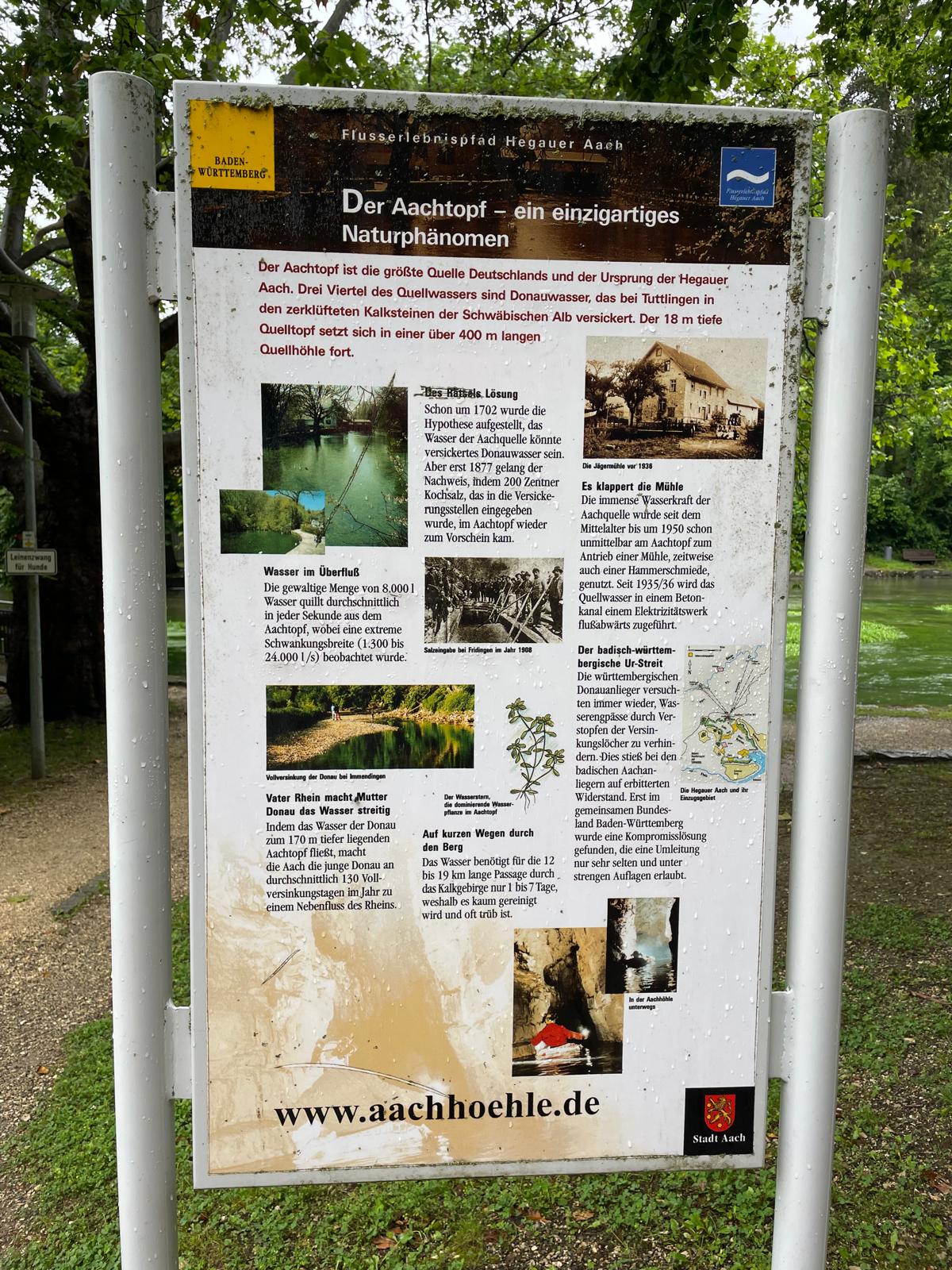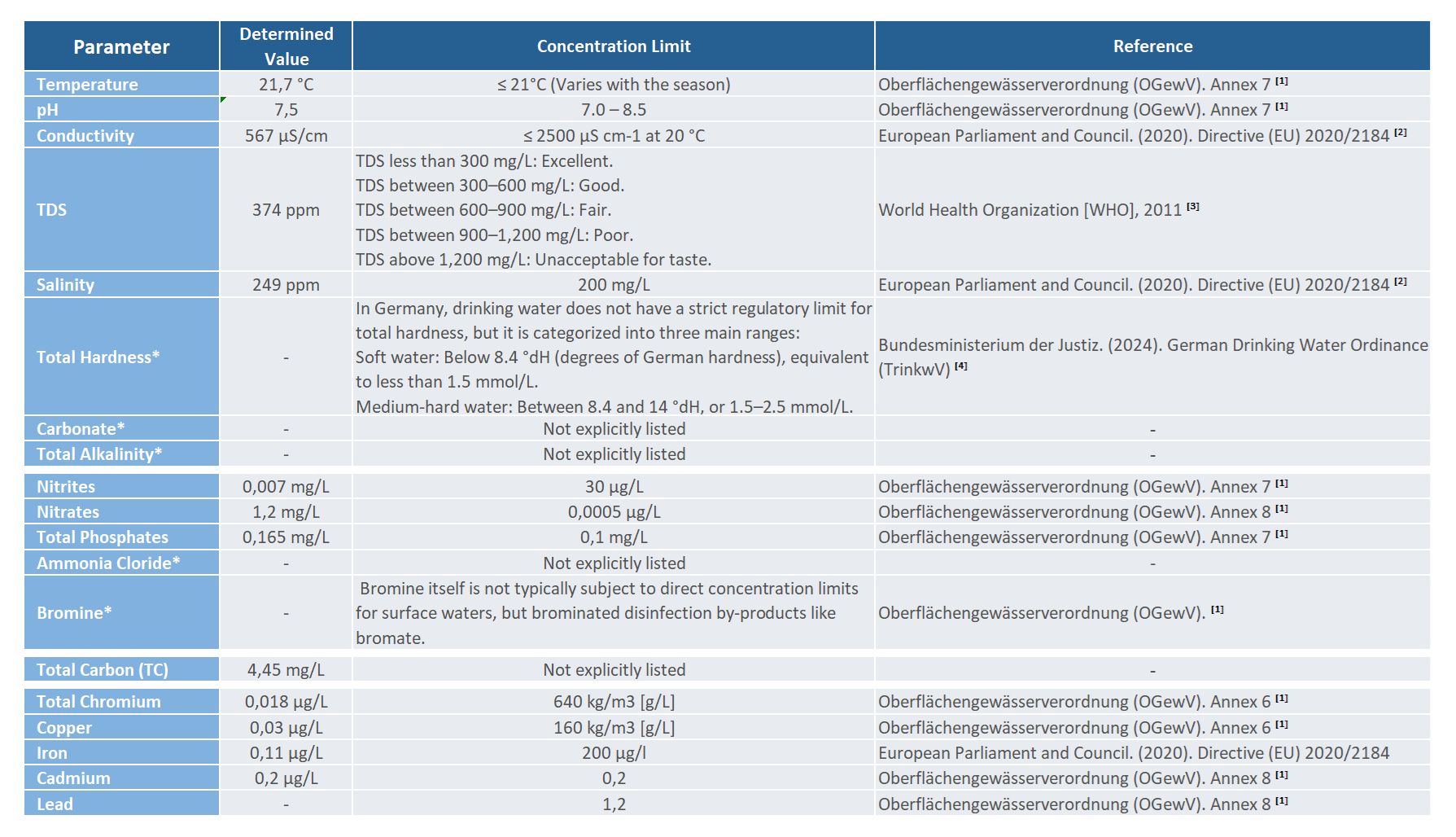Sound and Water Analysis
Aachquelle, Aach, Germany

Sound Analysis
Date: 03.07.2024
Time: 17:40 hrs
Atmospheric situation :A Calm and Overcast Atmosphere
Step into a peaceful scene where clouds take center stage, casting a soft, muted light over the surroundings. The atmosphere feels calm and contemplative, perfect for a quiet escape:
- Blanket of Clouds: The sky is covered in a uniform layer of clouds, creating a subdued and serene ambiance.
- Diffuse Light: The overcast conditions soften the sunlight, bathing the area in gentle, even tones.
- Tranquil Stillness: With no dramatic weather to disrupt the calm, the setting is quiet and reflective.

Water Analysis

Surface water from the Danube River was analyzed at the Aachquelle sampling point to evaluate its quality against several regulatory frameworks. These included the Oberflächengewässerverordnung (OGewV), the European Parliament’s Directive (EU) 2020/2184, the World Health Organization (WHO) guidelines (2011), and the German Drinking Water Ordinance (TrinkwV, 2024). While OGewV provides guidelines for surface water quality in Germany, it does not encompass all the analyzed parameters. To address this gap, additional standards from WHO and EU regulations were applied to provide a more comprehensive assessment of water quality, particularly for parameters not explicitly listed in German surface water regulations.
Several parameters at the Aachquelle sampling point met the respective regulatory limits, reflecting a generally favorable quality of the Danube River water. The pH level of 7.5 is well within the OGewV’s acceptable range of 7.0–8.5, indicating a neutral and stable aquatic environment. Conductivity at 567 µS/cm is significantly below the maximum allowable value of 2500 µS/cm, suggesting minimal ionic contamination. Nitrites were detected at 0.007 mg/L, well below the threshold of 30 µg/L outlined by OGewV, demonstrating low levels of organic nitrogen pollution. Similarly, low concentrations of heavy metals such as iron (0.11 µg/L), chromium (0.018 µg/L), and copper (0.03 µg/L) comply with the respective standards, reflecting limited industrial or natural metal inputs into the water.
Despite these positive results, certain parameters exceed regulatory limits, potentially impacting the water’s ecological and chemical balance. The temperature recorded at 21.7 °C slightly surpasses the seasonal OGewV threshold of 21 °C, which may stress thermally sensitive aquatic species. Salinity (249 ppm) exceeds the EU Directive’s recommended limit of 200 mg/L, indicating elevated dissolved salts that could influence water taste and aquatic health. Total phosphate levels at 0.165 mg/L significantly exceed the OGewV limit of 0.1 mg/L, suggesting nutrient enrichment that may lead to eutrophication and algal blooms. Furthermore, the concentration of cadmium (0.2 µg/L) is at the regulatory limit, which, if exceeded, could pose toxicological risks to aquatic life and bioaccumulate in the food chain. Addressing these issues would require measures such as reducing nutrient and heavy metal discharges into the river to maintain its ecological integrity and water quality.
References:
[1] Federal Ministry of Justice and Consumer Protection. (2016). Oberflächengewässerverordnung (OGewV) [Surface water ordinance]. https://www.gesetze-im-internet.de/ogewv_2016/index.html#BJNR137310016BJNE002400000
[2] European Parliament and Council. (2020). Directive (EU) 2020/2184 of the European Parliament and of the Council of 16 December 2020 on the quality of water intended for human consumption. https://eur-lex.europa.eu/legal-content/EN/TXT/?uri=CELEX%3A32020L2184
[3] World Health Organization. (2011). Guidelines for drinking-water quality: Fourth edition, incorporating the first addendum. https://www.who.int/water_sanitation_health/publications/2011/dwq_guidelines/en/
[4] Bundesministerium der Justiz. (2024). Trinkwasserverordnung (TrinkwV) [Drinking water ordinance]. https://www.gesetze-im-internet.de/trinkwv_2001/
